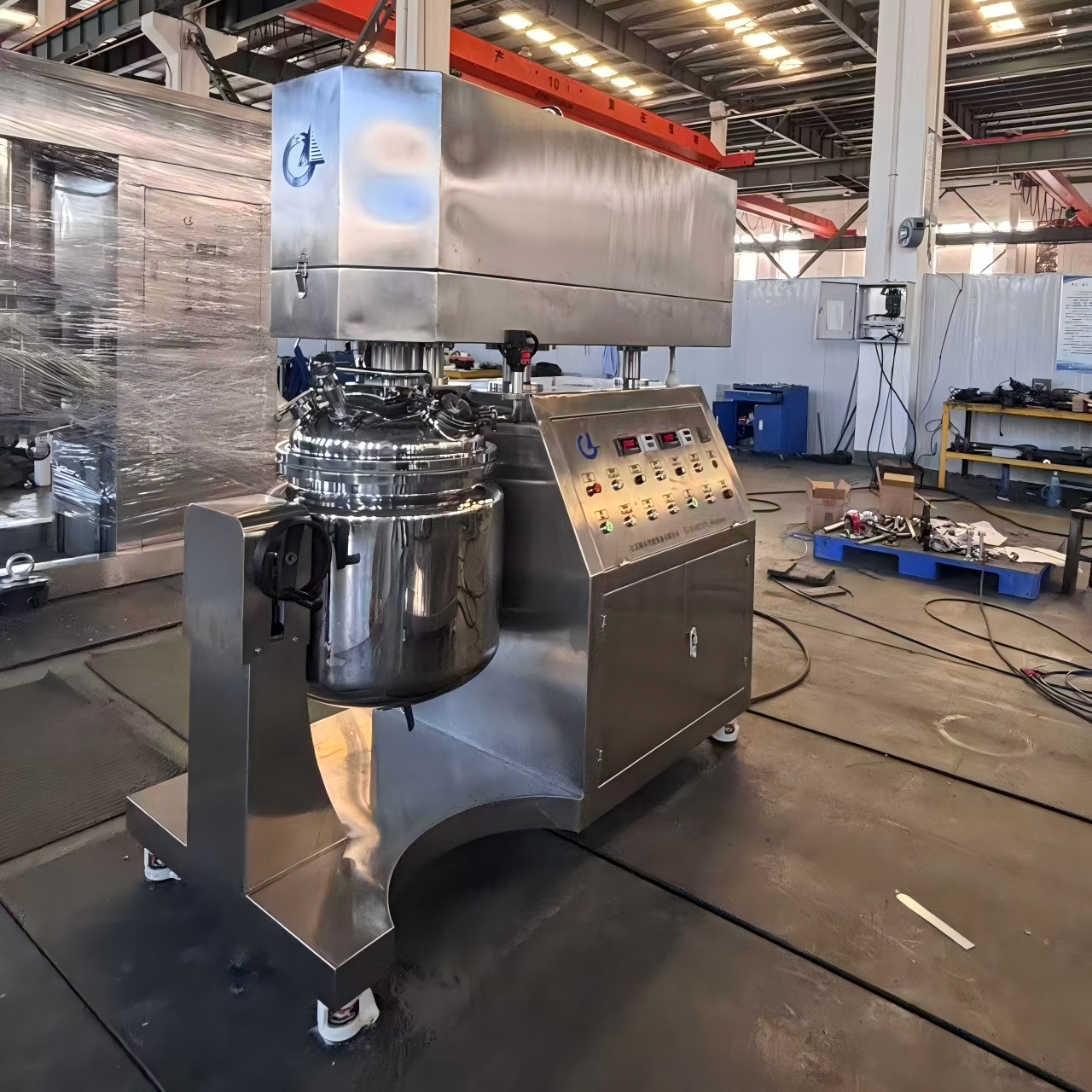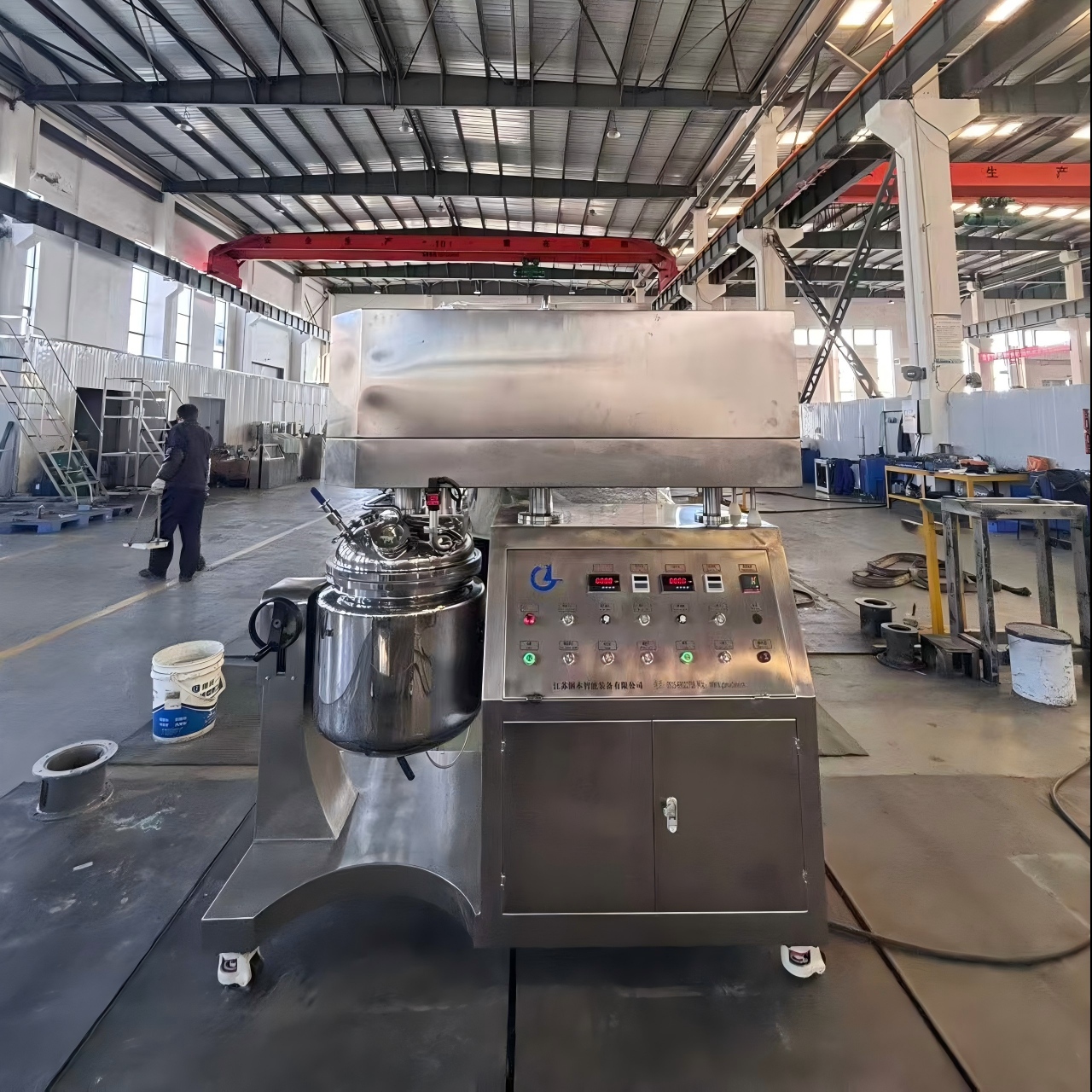Green Manufacturing's New Choice: Energy-Saving Vacuum Emulsifying Mixer Drives Eco-Friendly Production Trends
Vacuum Emulsifying Mixer: Driving Green & Sustainable Manufacturing Forward
In modern manufacturing, the shift toward green, sustainable production is no longer an option but a core strategic objective—one that demands equipment that balances efficiency, quality, and environmental responsibility. The vacuum emulsifying mixer (streamlined from the redundant "vacuum emulsifier homogenizer mixer," aligning with industrial terminology) has emerged as a transformative solution, steering industries toward eco-friendly practices while setting new benchmarks for production efficiency and environmental stewardship.
Technical Advantages: Lay the Foundation for Green Production
The vacuum emulsifying mixer’s design is inherently aligned with green manufacturing principles, leveraging its core technology to reduce waste, enhance resource efficiency, and minimize environmental impact:
1. Vacuum Environment: Cut Waste & Preserve Material Integrity
Operating in a sealed vacuum chamber eliminates air from the emulsification process, delivering two critical eco-friendly benefits:
Reduces raw material waste: By preventing oxidation and degradation of sensitive ingredients (e.g., natural oils in cosmetics, active pharmaceutical ingredients/APIs, or nutrient-rich food components), the mixer ensures fewer defective batches and less discarded material. In cosmetics production, for example, this can reduce raw material waste by up to 15% compared to air-exposed mixing.
Enhances product stability: Oxidation-resistant formulations require fewer synthetic preservatives or stabilizers—directly addressing consumer demand for "clean" (natural/organic) products while reducing the use of chemicals that pose disposal challenges.
2. High-Shear Homogenization: Boost Resource Efficiency
The mixer’s high-speed shearing action achieves ultra-uniform, fine particle size distribution (typically 200nm–2μm), which translates to:
Less raw material, equal efficacy: Uniform particle dispersion ensures active ingredients (e.g., vitamins in serums, APIs in ointments, or flavor compounds in food) are fully utilized. For pharmaceuticals, this means lower API dosages can achieve the same therapeutic effect; in food production, it reduces the need for thickeners or flavor enhancers.
Consistent quality across batches: Fine, uniform emulsions avoid "off-spec" products that would otherwise be discarded, further minimizing waste and optimizing resource use.
Energy Efficiency & Resource Conservation: Core Drivers of Sustainability
Beyond reducing material waste, the vacuum emulsifying mixer delivers tangible gains in energy and resource conservation—key pillars of green manufacturing:
1. Low-Energy Operation: Slash Carbon Emissions
Traditional mixing and emulsification processes often rely on high temperatures (to reduce viscosity) and prolonged mixing times, consuming excessive energy. The vacuum emulsifying mixer reverses this:
Lower operating temperatures: The vacuum environment reduces the temperature required to blend high-viscosity materials (e.g., from 80°C to 50°C for cream production), cutting energy use for heating by 20–30%.
Shorter batch cycles: High-shear homogenization achieves desired results 30–40% faster than conventional mixers. For a medium-scale cosmetics factory running 10 batches daily, this translates to 2–3 hours of reduced runtime per day—and significant energy savings over months.
Reduced greenhouse gas (GHG) emissions: Lower energy consumption directly decreases GHG output, aligning with global climate goals (e.g., the Paris Agreement) and corporate carbon neutrality targets.
2. Minimize Chemical Use: Reduce Environmental Footprint
The mixer’s precise control over emulsification allows manufacturers to:
Cut additive and emulsifier usage: Uniform particle dispersion eliminates the need for excess synthetic emulsifiers (e.g., in salad dressings) or stabilizers (in dairy spreads). In food production, this can reduce chemical additive use by 25% or more.
Simplify waste disposal: Fewer chemicals mean less hazardous waste from production, lowering the burden on wastewater treatment systems and reducing the risk of environmental contamination.
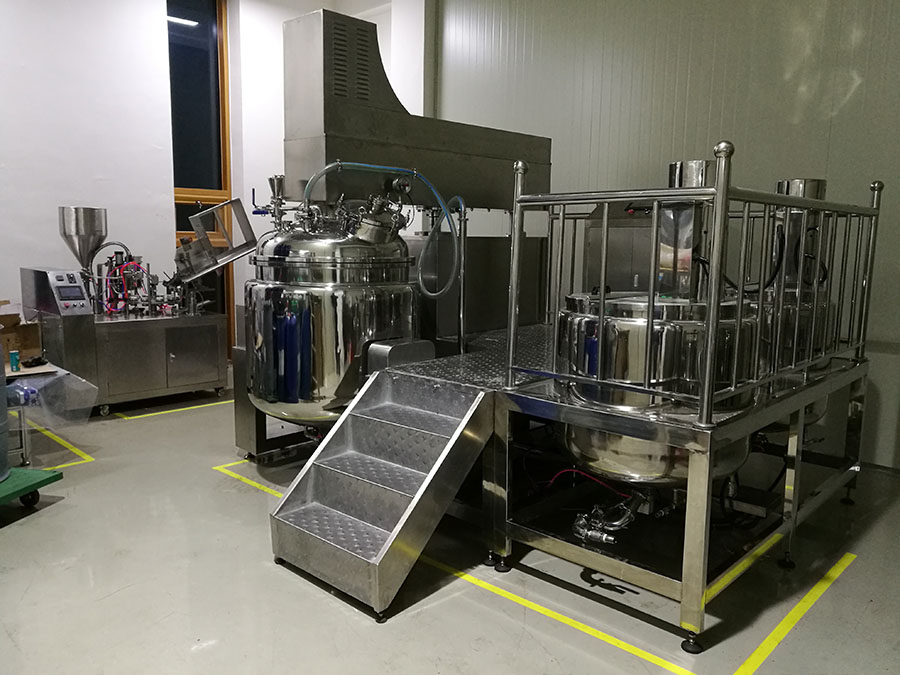
Industry Applications: Accelerate Green Practices Across Sectors
The vacuum emulsifying mixer’s versatility has made it a staple in industries prioritizing sustainability, with tangible eco-friendly outcomes in key sectors:
1. Cosmetics: Toward "Clean" & Low-Impact Production
Application: Formulates creams, lotions, serums, and sunscreens.
Green Impact: Reduces synthetic preservatives by up to 30% (thanks to oxidation prevention), enables the use of natural ingredients (which are more sensitive to air), and minimizes waste from unstable batches. Leading cosmetic brands have used this mixer to launch "zero-waste" product lines, where nearly 100% of raw materials are converted into finished goods.
2. Pharmaceuticals: Sterile, Low-Chemical Manufacturing
Application: Produces ointments, gels, vaccines, and topical medications.
Green Impact: The vacuum chamber’s sterile environment minimizes contamination risks, reducing the need for harsh chemical cleaners or high-temperature sterilization (which consumes energy). For vaccine production, this not only cuts energy use but also preserves the integrity of heat-sensitive antigens—critical for efficacy.
3. Food & Beverage: Reduce Waste & Chemicals
Application: Makes emulsified sauces (e.g., mayonnaise), dairy spreads (e.g., nut butters), and functional beverages.
Green Impact: Extends product shelf life by 2–3 months (via oxidation prevention), reducing food waste (a major global environmental issue). Additionally, lower additive use aligns with the food industry’s "clean label" trend and reduces chemical runoff from production facilities.
Jiangsu GangBen Mixer Manufacturer: A Pioneer in Green Mixing Technology
Among the leaders advancing green manufacturing with vacuum emulsifying mixers is Jiangsu GangBen Mixer Manufacturer—a brand renowned for integrating innovation, sustainability, and practicality into its equipment:
1. Sustainable Design: Engineered for Eco-Friendliness
GangBen’s vacuum emulsifying mixers are optimized for green performance:
Energy-saving components: Equipped with variable-frequency drives (VFDs) and high-efficiency motors, reducing energy consumption by an additional 10–15% compared to standard models.
Modular, durable construction: 316L stainless steel bodies (corrosion-resistant, long-lasting) minimize equipment replacement cycles, while modular parts allow upgrades (e.g., adding CIP/SIP systems) without full machine replacement—reducing e-waste.
2. R&D Focus: Stay Ahead of Green Trends
GangBen’s dedicated R&D team prioritizes sustainable innovations, such as:
Low-carbon vacuum systems: Upgraded pumps that reduce vacuum chamber energy use by 20%.
Smart control systems: PLC-based automation that optimizes mixing parameters (time, temperature, speed) in real time, further cutting energy and material waste.
3. Customer-Centric Support: Maximize Green Benefits
GangBen doesn’t just supply equipment—it partners with clients to unlock sustainability gains:
Customized solutions: Tailors mixer capacities (10L–5,000L) and features (e.g., jacketed tanks for temperature-sensitive materials) to match specific production needs, avoiding overcapacity (and wasted energy).
End-to-end service: Provides on-site training to optimize mixer operation for green outcomes, plus 24/7 technical support to minimize downtime (and unnecessary energy use during troubleshooting).
The vacuum emulsifying mixer is more than a production tool—it’s a catalyst for green manufacturing. By merging technical innovation with environmental responsibility, it helps industries reduce waste, cut emissions, and deliver high-quality, sustainable products. And with pioneers like Jiangsu GangBen leading the way, this technology continues to evolve—making green manufacturing not just a goal, but a practical, cost-effective reality.
News
- Latest News
- Solutions
- FAQ
Recommend Products
-
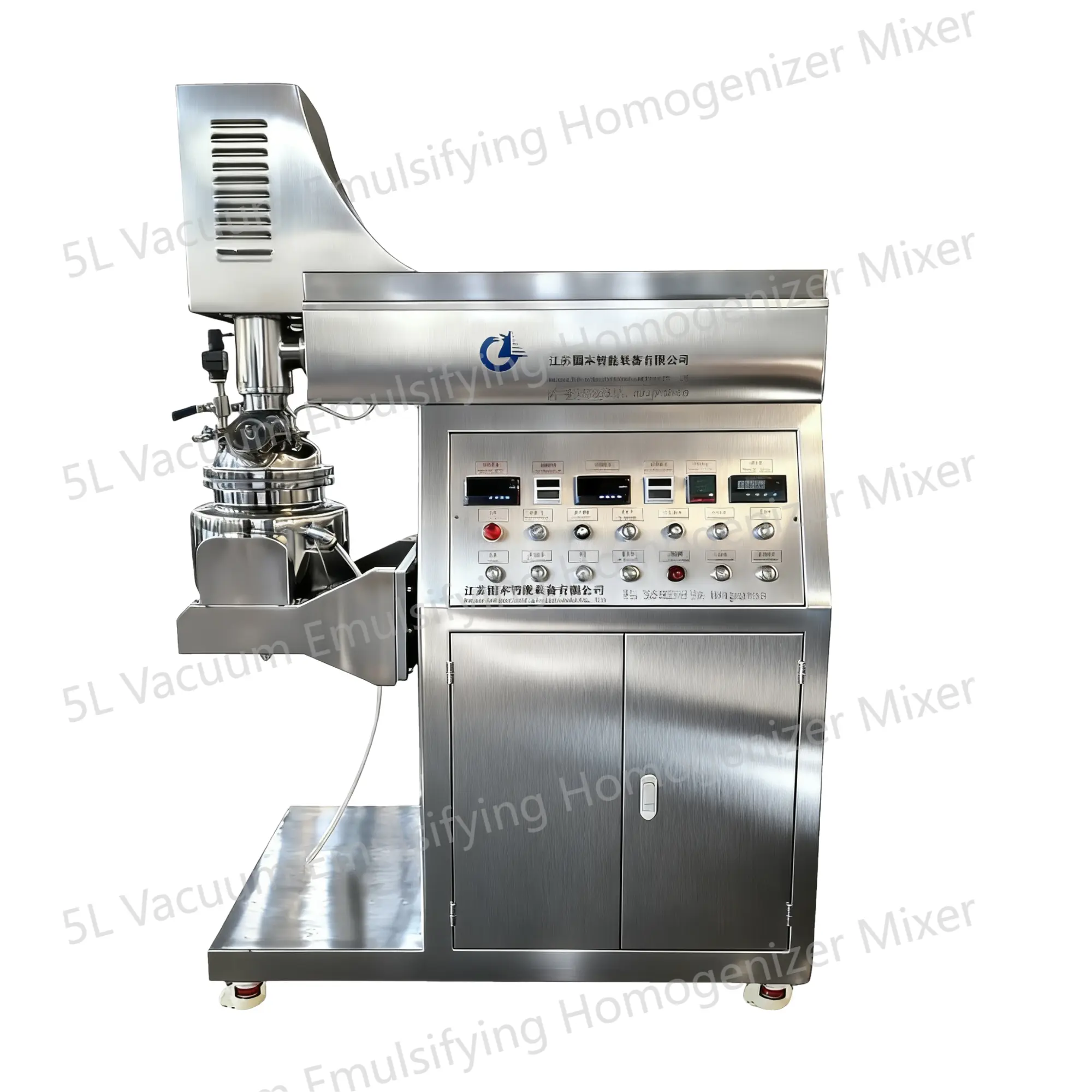 5L Vacuum Emulsifying Homogenizer Mixer
5L Vacuum Emulsifying Homogenizer MixerThe 5L vacuum emulsifying mixer is a device designed for emulsifying and mixing various substances in a vacuum environment. This equipment is equipped with a mixing tank with a capacity of 5 liters and is widely applied in industries such as food, pharmaceuticals, cosmetics, and pesticides.
-
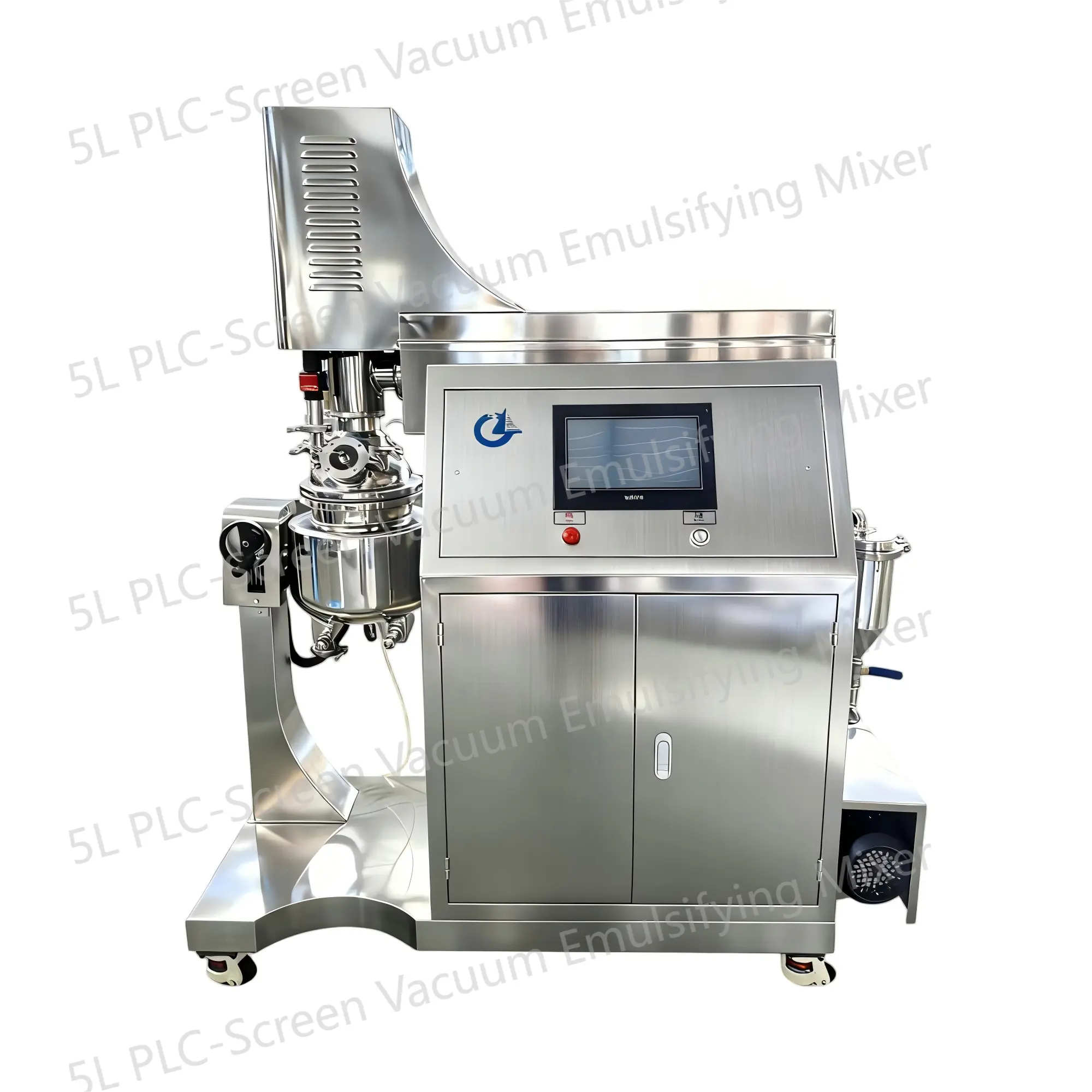 5L PLC-Screen Vacuum Emulsifying Mixer
5L PLC-Screen Vacuum Emulsifying MixerThe 5L PLC-Screen Vacuum Emulsifying Mixer is a device designed for emulsifying and mixing various substances in a vacuum environment. This equipment is equipped with a mixing tank with a capacity of 5 liters and is widely applied in industries such as food, pharmaceuticals, cosmetics, and pesticides.
-
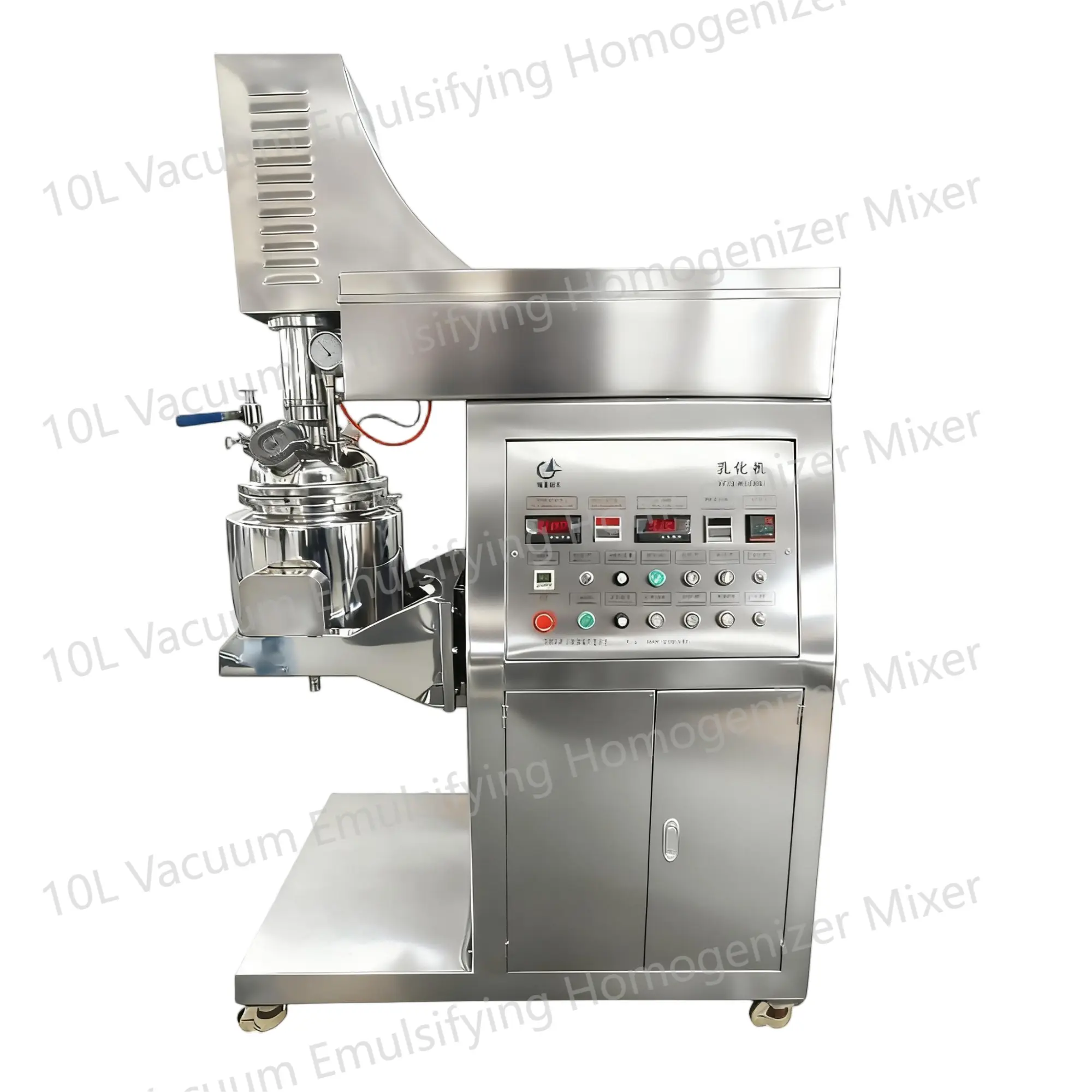 10L Vacuum Emulsifying Homogenizer Mixer
10L Vacuum Emulsifying Homogenizer MixerThe 10L Vacuum Emulsifying Mixer is a device used for emulsifying and mixing various substances in a vacuum environment. It is commonly used in industries such as food, cosmetics, and pharmaceuticals.


 English
English Russian
Russian French
French Spanish
Spanish Portuguese
Portuguese Korean
Korean Japanese
Japanese Thai
Thai